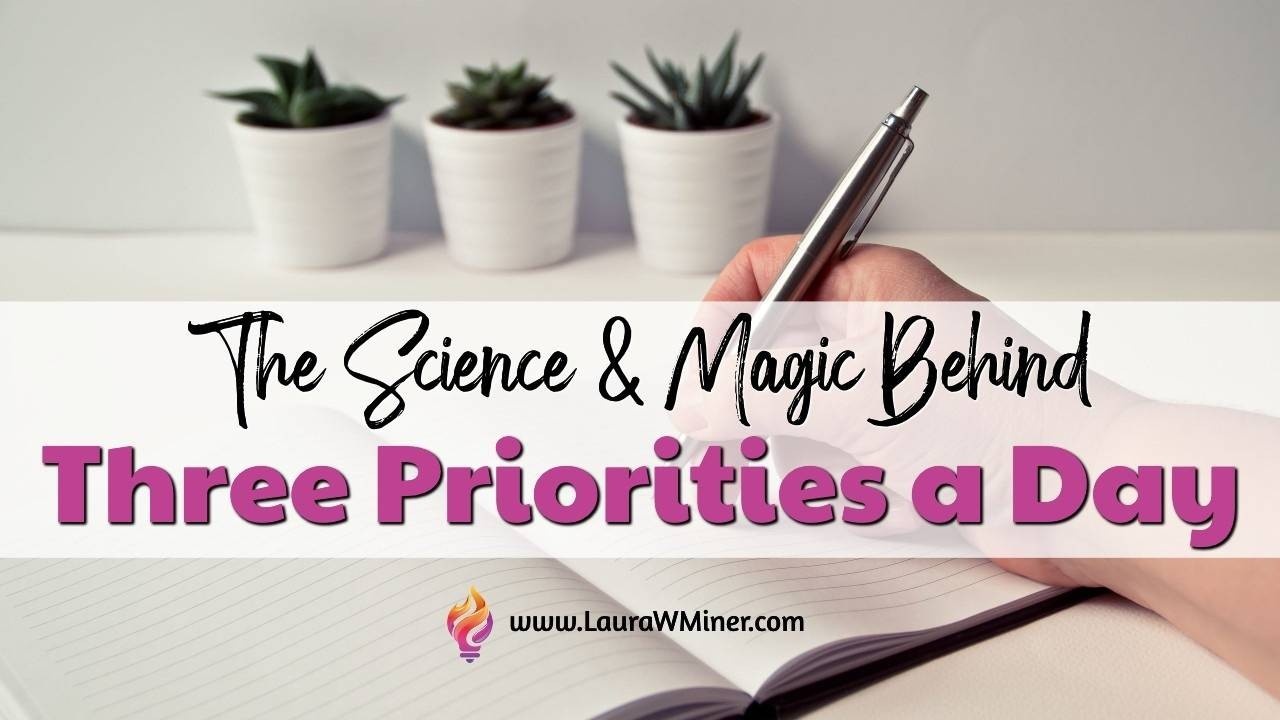
Did you know... 3 is a magic number?
This well-known fact is prevalent enough that countless business experts write, teach and speak about it.
Jim Collins, famed management expert and author of Good to Great and Built to Last, says: "If you have more than three priorities, you don’t have any.”
And J.D. Meier, author of the best-selling book Getting Results the Agile Way, addresses the magic number three when he speaks to “ruthless prioritization”. As he shares, "The rule of three is a very simple way to get results. Rather than get overwhelmed by your tasks, you choose three things you want to achieve and this puts you in control and gives you a very simple frame for the day.”
Countless similar examples exist, but the messages are all the same:
If you start your day with more than three priorities on your agenda, then your ability to successfully achieve them is significantly diminished.
Three priorities, depending on their nature, can easily take up an entire day. But once you have more than three, the juggling act becomes more difficult. And not just from a time perspective, but from a cognition perspective as well.
Depleting Your Cognitive Resources
Let’s say you have 5 different priorities for a given day and each one requires some brainpower - in other words, they're cognitively demanding. In order to get all five done, you're forced to bounce back and forth between them.
Each time you switch from one priority to another, your brain has to go through a process known as “switch tasking”.
Most of us are familiar with the term multitasking, where someone tries to perform multiple tasks at the same time. And as many are aware, the research has repeatedly proven that multitasking is ineffective and cognitively depleting.
But it’s often been assumed that “switch tasking” is okay. That, as long as you stayed focused on one thing at a time, and then switched back and forth between your priorities, your results would be positive.
Unfortunately, that’s not the case. As the research shows, even when people perform multiple tasks sequentially without any temporal overlap, switching between the tasks generally leads to worse performance. In addition, the research has shown that working memory is significantly depleted when one engages in multi-tasking OR switch tasking.
How to Set Yourself Up For Success
Start by limiting your priorities to three each day, then keep those three priorities related. Keeping similar work grouped together will allow you to make the best use of your cognitive resources.
As an example, I wear two distinctly different cognitive hats. I’m a business coach and consultant who teaches both individuals and organizations how to fuel their success with science… and I’m also a graduate student who’s pursuing a Ph.D. in Leadership Studies.
Both of these roles require brainpower, but the areas of the brain which are accessed, and the type of thought process needed, are quite different depending on whether I’m in my teaching or learning role. So, to set myself up for success, my days are “themed”, and whenever possible, I do not let them overlap.
It’s like Ghost Busters…. Don’t cross the streams!
With themed-days set, it’s easier to make sure that that your three priorities are related, thus making better use of your cognitive resources.
What kind of “themed” days can you implement?
I’ve had clients create…
- Meetings days, where all their meetings get scheduled on one particular day of the week
- Writing days, where they devote one day each week to the writing they do in their role
- Research days, where all the research to support their initiatives happens on one day
- Recording days, where a month’s worth of podcasts or videos are recorded in one day
- Even, thinking days, for the purpose of brainstorming and goal planning
Run an Experiment
Don’t take my word for it. Run an experiment for yourself.
STEP 1 - Spend one week limiting yourself to three priorities per day,
STEP 2 - Consider “themed” days to make the most of your cognitive resources, and
STEP 3 - Measure the productivity, creativity, energy, clarity, and time spent per task experienced on each of these days.
Once you see for yourself how much better your results are when you’re NOT bouncing back and forth between cognitively demanding tasks, you’ll wonder why you ever switch-tasked at all!
Want to fuel your success with additional science-backed insights? Click here to get access to a free, 10-part video course packed full of tips, tools, and science-backed insights to help you develop an achiever’s mindset!
Get the Practionable Leadership Newsletter
Practical, actionable insights to help you level up your leadership and life!



